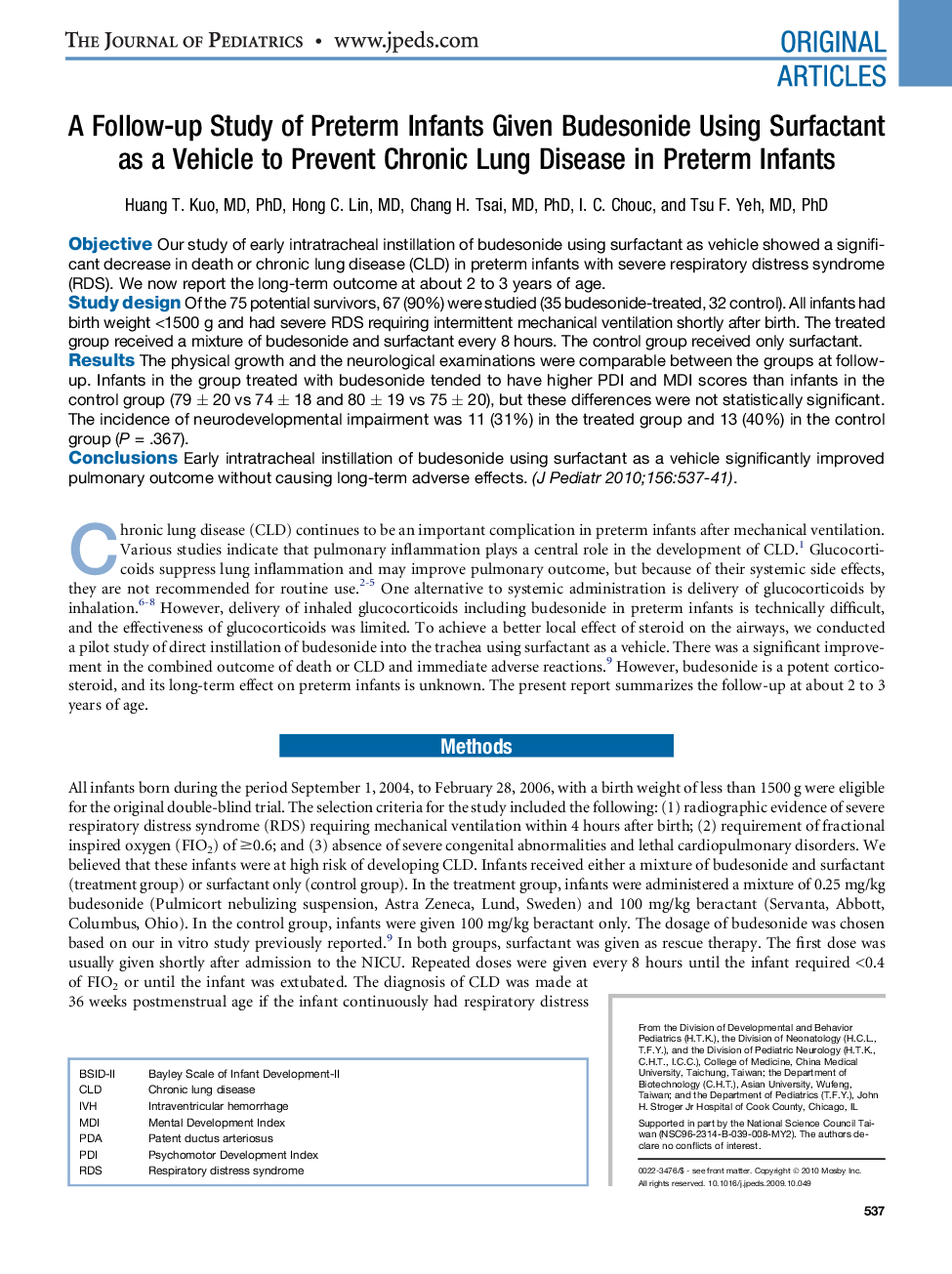| Article ID | Journal | Published Year | Pages | File Type |
|---|---|---|---|---|
| 4166495 | The Journal of Pediatrics | 2010 | 5 Pages |
ObjectiveOur study of early intratracheal instillation of budesonide using surfactant as vehicle showed a significant decrease in death or chronic lung disease (CLD) in preterm infants with severe respiratory distress syndrome (RDS). We now report the long-term outcome at about 2 to 3 years of age.Study designOf the 75 potential survivors, 67 (90%) were studied (35 budesonide-treated, 32 control). All infants had birth weight <1500 g and had severe RDS requiring intermittent mechanical ventilation shortly after birth. The treated group received a mixture of budesonide and surfactant every 8 hours. The control group received only surfactant.ResultsThe physical growth and the neurological examinations were comparable between the groups at follow-up. Infants in the group treated with budesonide tended to have higher PDI and MDI scores than infants in the control group (79 ± 20 vs 74 ± 18 and 80 ± 19 vs 75 ± 20), but these differences were not statistically significant. The incidence of neurodevelopmental impairment was 11 (31%) in the treated group and 13 (40%) in the control group (P = .367).ConclusionsEarly intratracheal instillation of budesonide using surfactant as a vehicle significantly improved pulmonary outcome without causing long-term adverse effects.
